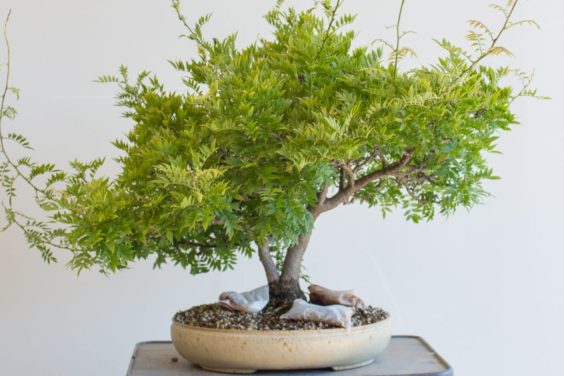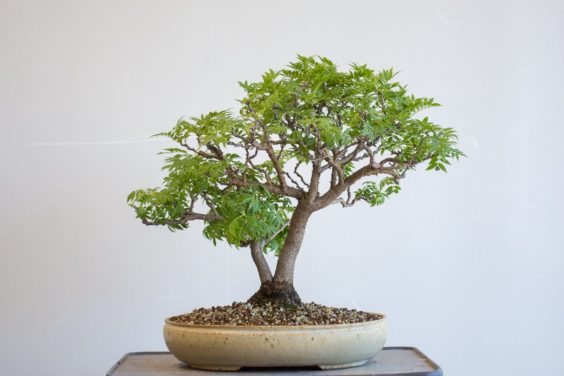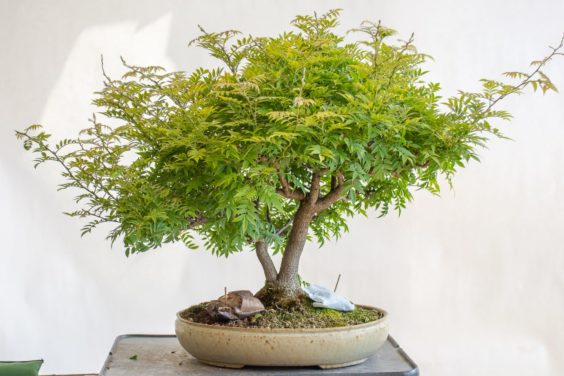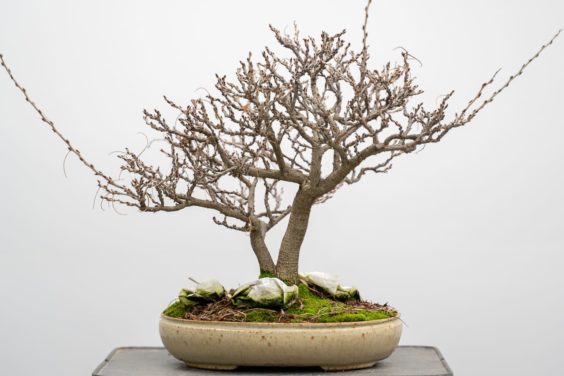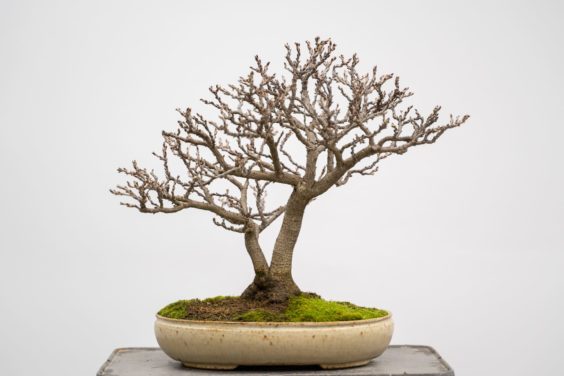About ten years ago, I picked up a young dwarf wisteria made from air layer by Boon Manakitivipart. Boon had grown the parent tree for some time before it bloomed, and when it did, he started several layers. The tree below is one of those layers.
Dwarf wisteria – 2009
To offer an idea of how quickly the species grows, here’s a photo from spring of 2017.
May, 2017 – pot by Victoria Chamberlain
After cutback
Just a year later, the tree looked exactly the same as it did a year before.
May, 2018
Here’s a better view of the branches without leaves.
December, 2018
After cutback – 13″
The tree has yet to bloom for me, but I’ve found it to be a fun species to have in the garden as the leaves have a unique texture.
What is the actual species? That’s a question to which I have yet to find a satisfying answer. Bill Valavanis suggested that the botanical name is Wisteria sinensis ‘Kofuji.’ A number of nurseries offer plants with this name, so it’s a good bet for the species.
I’ve also seen a number of similar plants with the name Millettia japonica or sometimes Millettia japonica ‘Hime fuji.’
Both Wisteria sinensis (“Chinese wisteria”) and Millettia japonica (“Japanese millettia”) are listed as independent taxons, that is, independent types of plants. They are related as both are in the tribe (one rank higher than genus) Millettieae, a member of the bean family. Here’s where I found some interesting connections between the species.
A synonym for Millettia japonica is Wisteria japonica (“Japanese wisteria”). A synonym for Wisteria sinensis is Millettia sinensis. Given these synonyms, millettia and wisteria are interchangeable, but the distinction is preserved between the Japanese and Chinese species.
These synonyms highlight similarities between wisteria and millettia, but they don’t help with identifying the dwarf cultivar or cultivars. The suggested cultivar names don’t help much either. ‘Kofuji’ is Japanese for small wisteria, making Wisteria sinensis ‘Kofuji’ translate to “Chinese wisteria, small Japanese wisteria.” Likewise for ‘Hime fuji’ which also means small wisteria in Japanese.
If any budding – or professional – taxonomists can shed some light on whether or not there are one or two dwarf “wisterias,” feel free to let us know in the comments and cite any relevant sources.
In my recent research, I found many references to how good the vine is for development as bonsai. I agree, but have been surprised that I’ve seen so few developed specimens over the years. If you know of some beauties, please share!
Workshop Dates Set for 2019
If you’re interested in attending workshops next year, check the Workshop page to learn more and sign up online.
The post A dwarf wisteria bonsai appeared first on Bonsai Tonight.


